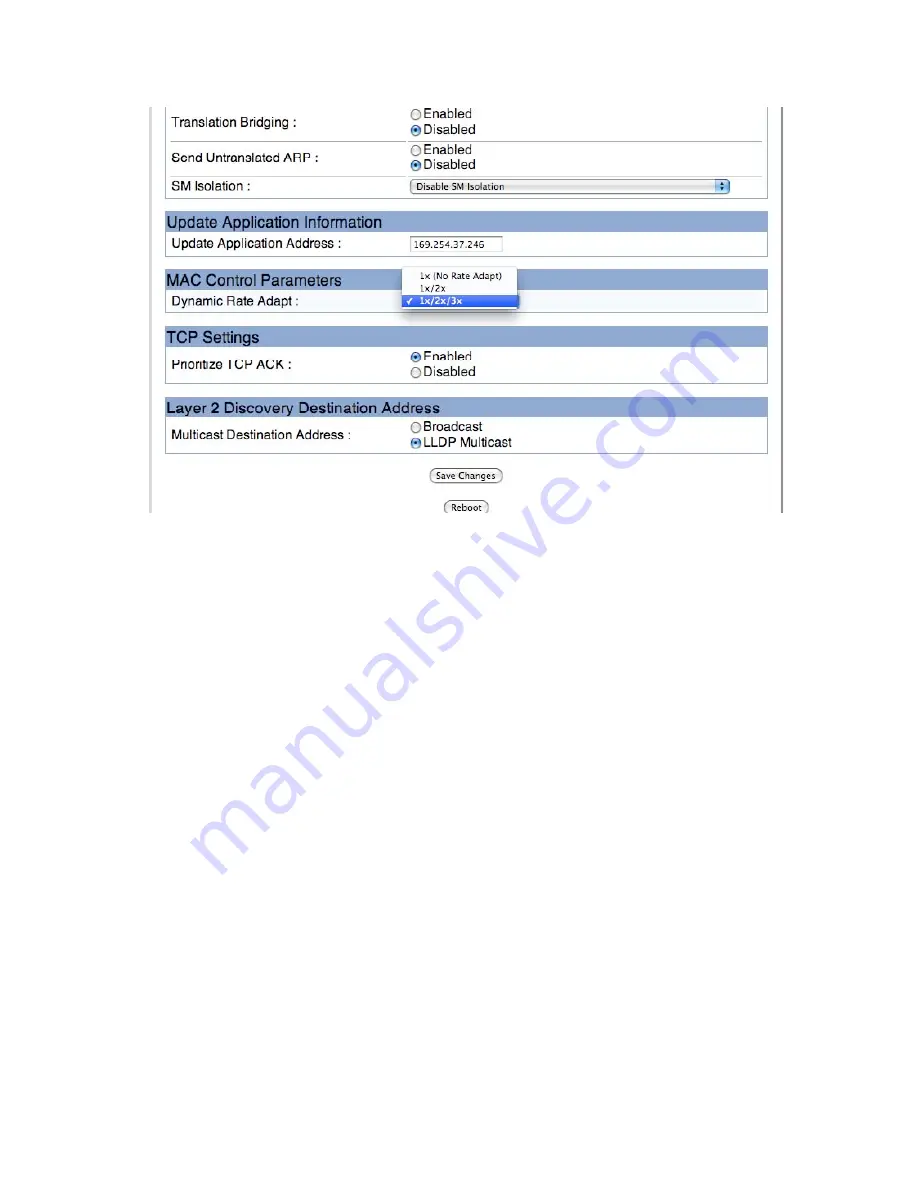
PMP 400 and PTP 200 Series
Canopy User Guide Supplement
Issue 3, January 2009
Page 18 of 45
Figure 5: Dynamic Rate Adapt on AP "Configuration => General" page
In most cases, an operator is well-served to leave the setting at 1X/2X/3X and let the system
automatically and dynamically choose the best rate for each link. Cases when it may be useful to
lock down a link to 1X include
•
Some aiming and alignment efforts, although usually aiming and alignment and link
optimization work well with 3X operation allowed. If you are having trouble aiming a
link or getting it to register, locking the link down to 2X or 1X may help in some cases.
•
If the link is suspected to be oscillating between operation rates to the detriment of
throughput. Usually, even if the link is moving rapidly between operation rates,
overall link throughput and sector capacity are highest if the link is left at 3X and the
link can choose its own rate dynamically.
•
General link troubleshooting
Note that it is useful for as many links as possible to run at 3X to provide as much capacity as
possible for the sector. In particular, just because you want to limit throughput to an individual
subscriber
does not
mean you should set that link to 1X operation. Use MIR (Maximum
Information Rate) settings to cap the SM’s bandwidth use, but let the link run at as high an
operation rate as the RF environment will allow. This ensures that when transmitting data the link
uses as little “air time” as possible, leaving more “air time” for other SMs.
4.2
TRANSMITTER OUTPUT POWER (AND NO JITTER)
The AP/BHM’s Transmitter Output Power is configured on the AP/BHM’s “Configuration =>
Radio” page. For 5.4 GHz radios, Transmitter Output Power is settable in a range from –30 dBm
to 12 dBm, with a factory default setting of 10 dBm. For 4.9 GHz radios, Transmitter Output
Power is settable in a range from -30 dBm to 18 dBm, with a factory default setting of 18 dBm.
In most regulatory regions, including the US, Canada, and Europe, PMP 400 and PTP 200 Series
modules operating in the 5.4 GHz band are limited to 27 dBm EIRP (Equivalent Isotropic
















































